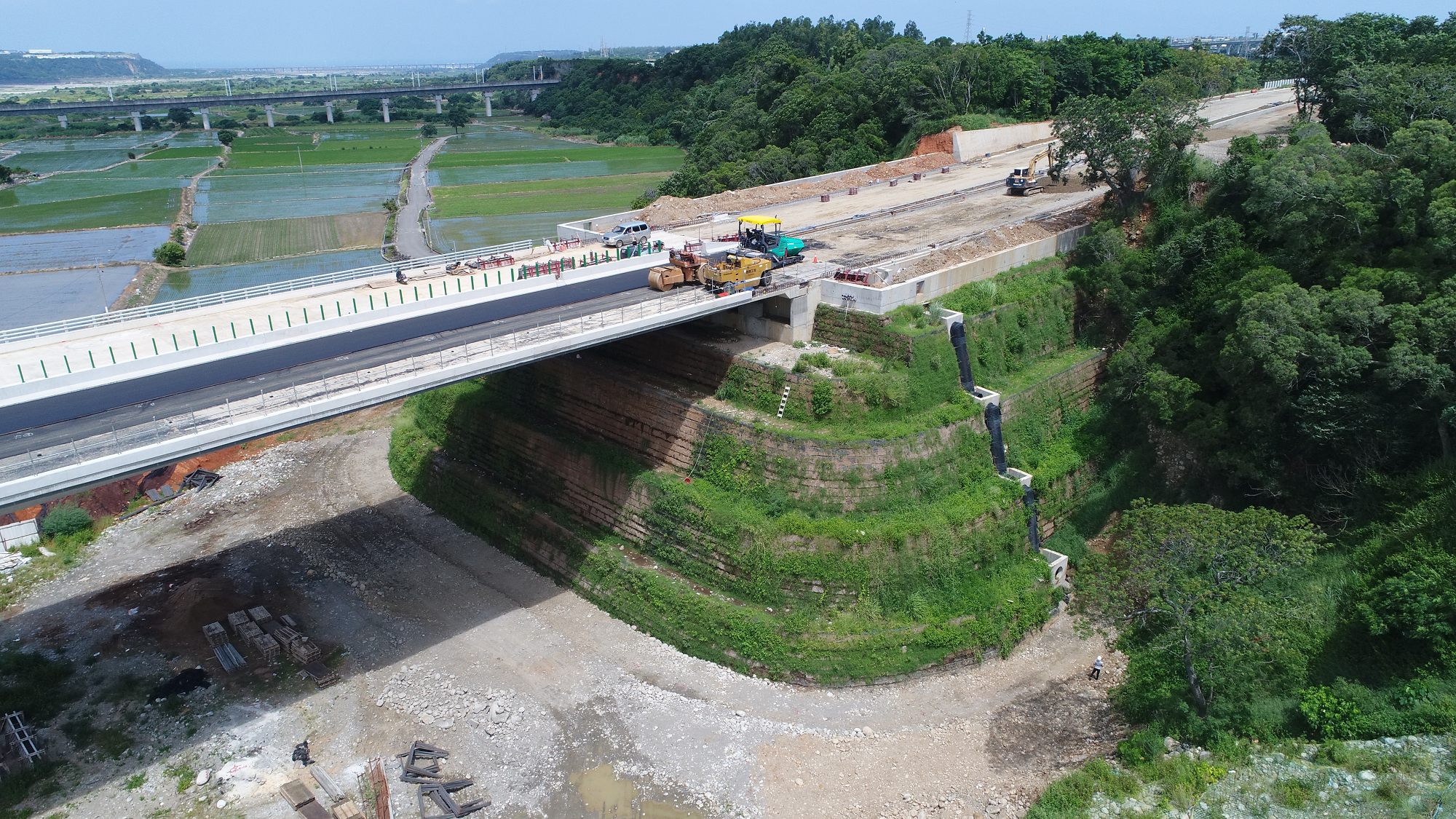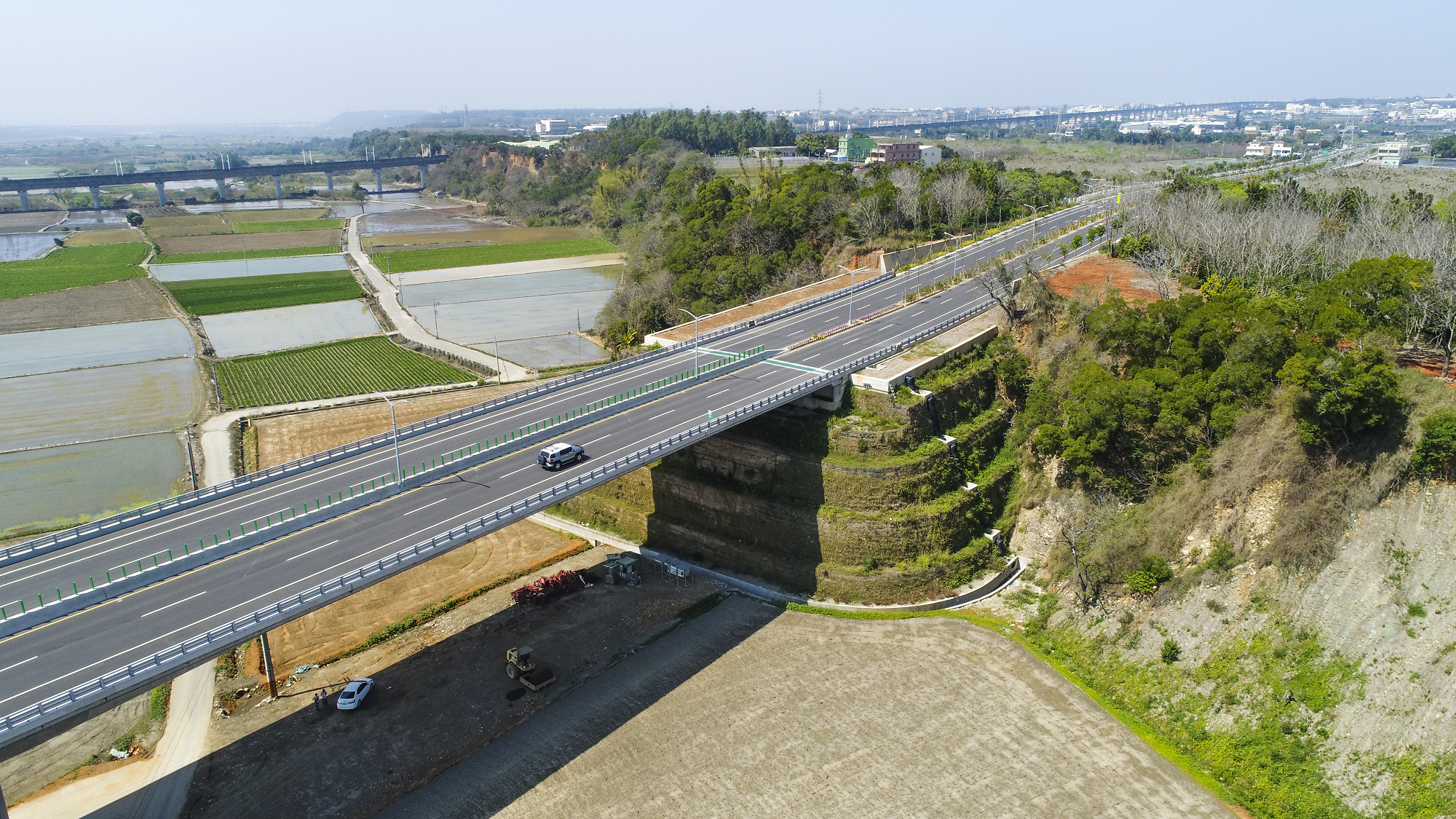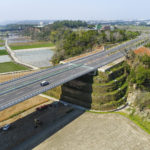Company:
ACE Geosynthetics Inc. Taichung City, Taiwan
Project Details
Fabric 1
ACEGrid®
Producer:
ACE Geosynthetics Inc.
Supplier:
ACE Geosynthetics Inc.
Please describe the project specifications
Originally, Shengang Interchange goes through the south side of Shangang District only. Therefore, road users cannot use this interchange to get accessed to Houli District by crossing Dajia River. In order to shorten the commute time for residents in Houli District to metropolitan circular freeway system, make their transportation more convenient, and ease the massive traffic load which is expected to be brought by Taichung World Flora Exposition, the city government plans to build a connecting road with abutment across Dajia River with nearly 3 km in length.
What was the purpose of this project? What did the client request?
In order to make the transportation of residents more convenient and diminish the heavy traffic flow brought by Taichung World Flora Exposition, the city government decides to build a connecting road with abutment for nearly 3 km in length. The abutment is located at the toe of the slope and large scale of excavation is necessary. If there is no protection to the surface of the slope during excavation, the slope is likely to topple down due to the rainwater or external force and then endangers the safety of abutment. The filling also requires to be stabilized due to huge amounts. For making Taichung City to be deserved the name “Flower City” to enhance the local tourism industry, the city government hopes to make the tourists feel free from the concrete jungle right after they exit the interchange. Owing to this requirement, the well-known wrap-around reinforced structure which could be covered with green vegetation is the most appropriate choice. The design adopts ACEGrid GG210-I and in-situ excavated soils and rocks to build a retaining wall with 20 meter in height. There are total 4 stages and each stage is with 5m in height. Drainage facility is installed in every layer to accelerate water discharge in torrential rain. The structure is a U-shaped retaining wall to completely cover the rigid abutment.
What is unique or complex about the project?
● Design: The structure is presented in a U-shaped retaining wall to cover the abutment and protect the peripheral bare slope. The reinforced retaining wall increases the safety of abutment and the wall surface helps to resist the scouring to the slope brought by rainwater and external force.
● Stability: The durability of materials offered by ACE Gesynthetics is excellent and with low creep to diminish the deformation of structure.
● Aseismatic: There is no stress concentration problem in reinforced structure. The feature is especially suitable for Taiwan, which is located in the area of frequent earthquakes.
● Economical: It’s cost effective to use in-situ material in the design for permanent structure.
● Eco-friendly: The requirement of eco-friendliness and low carbon emission can be achieved.
● Pleasant landscaping: Natural landscaping is created due to the soft and comfortable appearance of reinforced retaining wall. It’s different from the senses of chilly and rigid brought by traditional concrete structure.
● Rapid: The installation process is simple and short , and installation quality can be controlled easily.
What were the results of the project?
The city government is satisfied with the structure. It shortens nearly 45 minutes’ drive from rural area to downtown. The results can be reviewed in the following aspects:
● Safety: the structure strengthens the stability of abutment’s foundation and the slope simultaneously .
● Cost-effectiveness: large amounts of excavated soils and rocks are filled back into the reinforced structure and slash the cost drastically.
● Eco-Friendliness: Green vegetation in the surface of the reinforced wrap-around structure is integrated harmoniously into the natural surroundings and beautifies the outlooking of the abutment. The surface of the structure turns exuberant green within one year after project completion. Adopting in-situ soil and rocks in the reinforced retaining wall helps to lower down the cost of delivering waste soils and the risks of polluting the environment.
Content is submitted by the participant. IFAI is not responsible for the content descriptions of the IAA award winners.




 TEXTILES.ORG
TEXTILES.ORG






